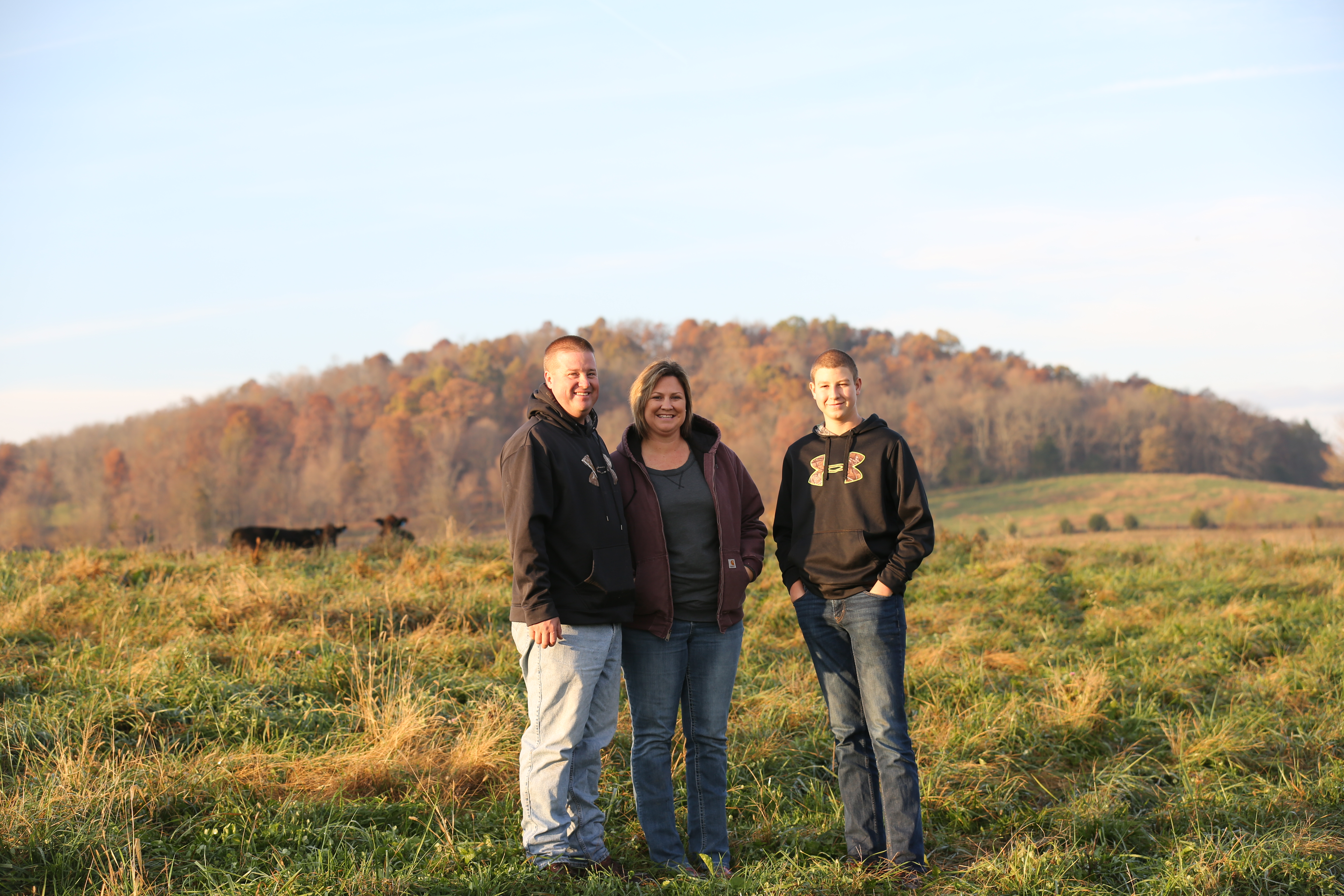Better beef on the horizon
The sun was just peeking over the hills surrounding Hardyville, Ky., when I drove right past Jay McCoy’s ranch. My GPS told me I had arrived, but I knew there was no way his was the place surrounded by Holstein cattle.
On the hunt for pastures that told me I had arrived at a commercial cattle ranch, I found nothing and begrudgingly turned my car around and up the driveway towards the Holsteins, wondering exactly what I was about to find.
Jay quickly set my heart at ease.
“We run a dairy backgrounding operation too, but let me tell you about my real passion — the cow herd.”
You can hear it in his voice, the way he cares about his 150 Angus-cross commercial cows. From the backseat of the pickup, his mother and business partner, Sharon, tells me all he’s ever wanted to do is work with cattle.
“This is what I want to do everyday,” he says gesturing to the beef cows grazing in the pasture. “Keep breeding black cows that will grow our numbers and perform here on the ranch and beyond.”
In 2002, when the mother and son duo purchased the land they run cattle on today, their herd consisted of just 20 cows. Since then, they’ve focused on consistently investing in the best Angus genetics they can afford to make progress toward their goals.
“The end consumer is always on our mind because, ultimately, that is the determining factor whether we survive or fail,” Jay says. “We want to produce the very best animal we can that works both for the farm and the restaurant.”
It’s something he and his seedstock supplier, James Coffey, agree on.
“We focus on adding value all the way through the production chain, beginning with genetic selection and ending with the Certified Angus Beef® brand,” James says.
Typically, Jay would raise his calves to 800 pounds and then send them on to the local salebarn, but this year, he’s doing things differently. Partnering with James, Jay sent his spring 2017 calf crop to Pratt Feeders in Kansas.
He wants to know if what he’s doing on the ranch is really working, “to get the information back and understand how they are really performing.”
He didn’t mind my asking him to show me around the ranch at sunrise so we could capture optimal lighting for photos and, even with the early hour, excitedly shared what’s on the horizon for his herd.
“This will be the ultimate test, getting some of our carcass data back,” Jay tells me. His goal is to use the data to get a better picture of how his cattle perform after leaving his ranch – something he can’t get at the local sale barn.
He doesn’t know exactly what the data will tell him, but he knows it will help him make decisions that result in higher quality beef.
Until next time,
Nicole
You may also like
You, Your Cows and Their Feed
Expert guidance from Dusty Abney at Cargill Animal Nutrition shares essential strategies for optimizing cattle nutrition during droughts, leading to healthier herds and increased profitability in challenging conditions.
Marketing Feeder Cattle: Begin with the End in Mind
Understanding what constitutes value takes an understanding of beef quality and yield thresholds that result in premiums and/or discounts. Generally, packers look for cattle that will garner a high quality grade and have excellent red meat yield, but realistically very few do both exceptionally well.
Kansas Ranchers Recognized for Sustainability Efforts
Kansas’ Wharton 3C Ranch thrives despite droughts, winning the CAB 2023 Sustainability award. The data-driven, quality-focused approach of first-generation ranchers, Shannon and Rusty Wharton, yields 100% CAB cattle. Their commitment to sustainability and industry collaboration sets a bright future for the cattle business.





